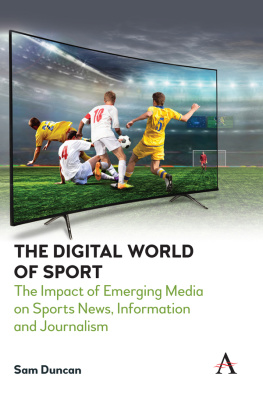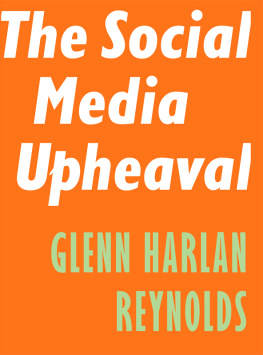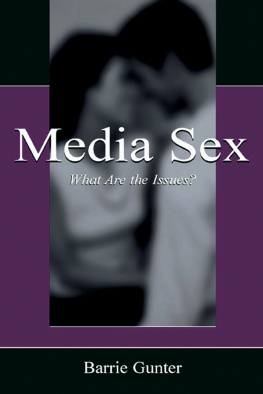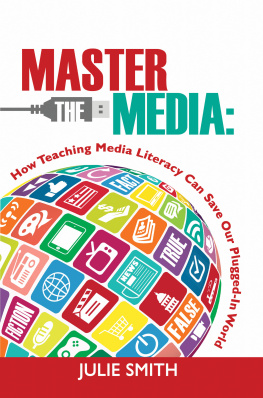Carly Wipf, my assistant, kept me and the book goingindefatigably and with an enthusiastic editors eyeto the end. I cannot fathom why she wants to be a reporter.
Eric Fox spared the schoolmasters rod but dispensed wondrous syntactical and analytic advice. Its an important book, he would fib as the chapters showed themselves.
Susanne Kirk, an editor for decades at the hallowed Scribner, watched with unflagging humor and reassurance as the drama of a book critical of the Times (with its feared Book Review) and the first-glance (but wrong) impression of pro-Trumpism took rebellious shape, found a big-time agent, and then a publisher. From one end to the other, Mississippi watched Susie shaking her head and laughing, as she pressed me to finish. Its a good book, she fibbed as more chapters appeared.
Sarah Wallace Rosenbloom is an extraordinary, old-fashioned (What do you like to read?) librarian reared in Texas, who has managed, or help manage, libraries from the London School of Economics to a city in Iowa. Her Baker Street Irregulars of head librarians everywhere kindly provided, with their digital skills, researchgift-wrapped in encouragement.
Former colleagues at the New York Times made inestimable contributions, all with the usual NFA guaranteenot for attribution. I honor that pledge, and them.
Not least, Emilio spent many hours on his mat next to my computer deskall the while bravely risking a bushy tail dangerously close to a desk chair on wheels. He calmed me with the placid snoring of a ragdoll when he expertly judged that I needed calming and urgently encouraged me to hasten when mealtime approached.
All errors of substance or style are mine alone.
The inside-dopester is competent in the way that the mass media have taught him to be. Ideology demands that, living in a politically saturated milieu, he knows the political score as he must know the score in other fields such as sports.
D AVID R IESMAN
There were so many insiders that, it seemed, there were no outsiders.
D AVID G RANN IN THE N EW Y ORKER
If you dont read the newspaper, youre uninformed. If you read the newspaper, youre mis-informed.
M ARK T WAIN
The Spike was the dangerously sharp needle on the desk in front of the editor. The editor impaled on it the stories that, for one reason or another, werent going to make it into the paper.
Early on in my career, I developed a dozen hints for people who read newspapers and want to understand them better:
1. Watch Out for Bias
You must understand the bias of the reporter, the editor, and the publication.
In its Style section in October 2015, the New York Times praised entrepreneurs harnessing goodness through technology. The article was headlined The Transformers and written by Laura Arrillaga-Andreessen, not a Times staffer. The article went on to praise Airbnb. When I did the tiniest bit of research, I learned that Ms. Arrillaga-Andreessen is the wife of Marc Andreessen, a substantial investor in Airbnb. According to Tech-Crunch, her husband contributed almost half to the $112-million investment Airbnb raised in 2011.
Ms. Arrillaga-Andreessen went on in her article to mention that Airbnb was being challenged by a hotel industry spending billions to combat it.
This conflict was brought to the attention of the public editor of the Times, and she responded to a concerned reader in the paper. The public editor asked the editor of the section, Deborah Needleman, whether she had a problem with the story as it had appeared. Ms. Needleman answered that she thought Ms. Arrillaga-Andreessen is a separate person from her husband with her own career and credentials. Laura is, separately from her husband, a billionaire [making her through marriage a billionaire twice over] and for that reason I failed to consider any monetary conflict in her case. Ms. Needleman said that she would have included a disclosure but would have again commissioned Ms. Arrillaga-Andreessen to do the piece.
Because I was once a federal prosecutor, I remain interested in defenses. I can surmise only that this must be the too-rich-to-be-unethical defense: If you have enough money, and your husband happens to as well, you are excused from any possible conflict. We live in an age when women have gained great independence, matrimonial and otherwise, but is it credible that a wife would have no interest in her husbands investmentsperhaps the family investments?
2. Who Says So?
The constant process of editorial selection defines what the paper is telling you is important in the worldwhat you should know about. Everything in a newspaper doesnt have to be gray and serious, but in October 2015, an article from Lisbon in the New York Times about tuk-tuks filled more than half a page. (Tuk-tuks are three-wheeled, hooded vehicles drawn by one or more people, fitted with a small engine.) The piece pronounced Three-wheeled outsiders arrived in droves and make themselves at home.
Many of us could have lived without knowing that tuk-tuks are occupying central Lisbon, and half a page is a lot in a tight news budget. Some editor made that quixotic call. Why?
3. The Bazaar
Sometimes the marketplace drives whats in the paper. Again, in October 2015, the Times ran a piece about the risk of cancer from eating certain processed or red meats. The piece reported, though, that experts had concluded the increase in risk is so small that most people should not be greatly worried. Given the shortage of news space, the question is why this story got into the paper at all. Perhaps it did because other parts of the media were reporting the story. The argument might be made that the risk ought to be put in perspective.
But then there are stories that tell readers nothing at all.
4. Inside Baseball
When reading the front page of a newspaper, ask why those stories are important enough to be there. Again, in October 2015, a lengthy front-page pieceit was more than a full page longsaid nothing. It offered a portrait of Carly Fiorinas time as CEO of Hewlett-Packard. She was one of many candidates running for the Republican nomination for president. The reporters discoveredprobably to no ones surprisethat different people had different views of Ms. Fiorinas stewardship at HP. Readers were left at the end of five columns scratching their heads. The story could have been summed up in a single paragraph: There are them that liked her, and them that didnt, with a crisp indication of those who liked her and those who did not.
On October 24, 2015, the Times told its readers that the most important thing for them to know about their world that day was about watching police. It reported that the acting director of the FBI had said that observing police closely leads to a rise in crime. The paper acknowledged that this was an unsettled theory. It was not only unsettled. It was also self-serving. Presumably, the FBI and the police dont welcome increased scrutiny of what theyre doing. A few paragraphs could have summed up the report.
5. Lede & Kicker
If you are trying to read the paper in a hurry, you must read the lede (the first paragraph, or graf), of course. Id suggest you then go to the kickerthe last paragraph or two. The kicker may provide the point of the piece, and may give you the writers own impression, often with a quote the reporter has chosen as significant.
6. Selective Style
In October 2015, the Times ran a piece headed Politics Rears Its Well-Coiffed Head, describing itself as a lesson to be learned in the morphing hairstyles of politicians. A








